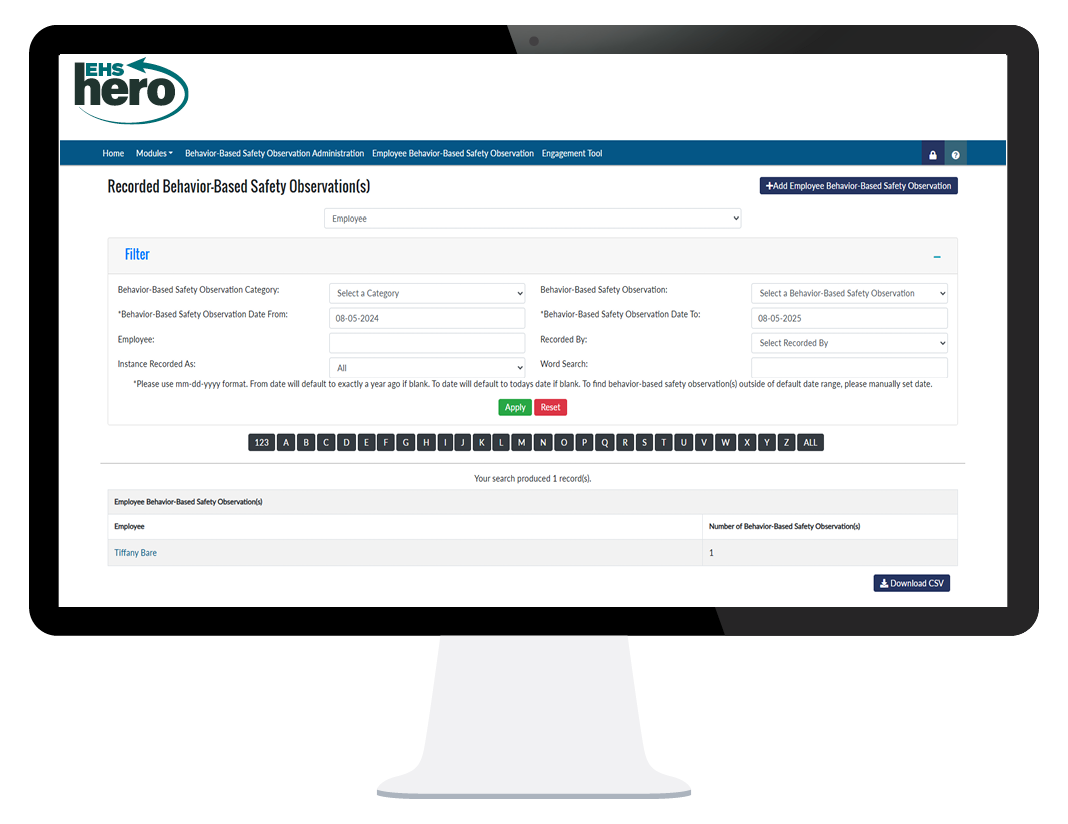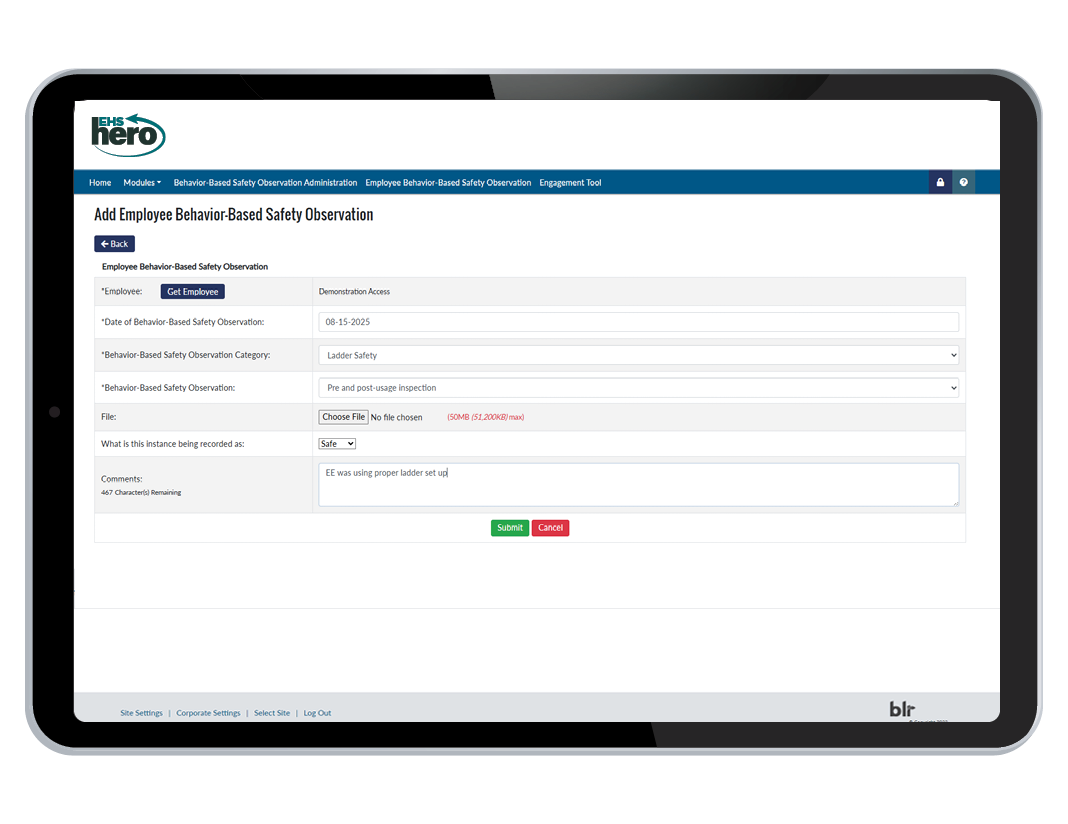Behavior-Based Observations
A measurable means for tracking employee engagement in your company’s safety program.

Improve your safety program while maintaining compliance
Gather data/metrics on employee safety behaviors and the use of T.I.P.S. designed to help you assess, incentivize, and improve your EHS program to meet safety engagement requirements.

Continual improvement
Gather data on safety-related behaviors at work to uncover trends, patterns, and opportunities for enhancement in workplace safety.
Data-driven decisions
Metrics and reporting features help organizations identify areas for improvement and make data-driven decisions to improve safety performance.
Designed for accountability
Highlight areas of stellar performance while providing employees with information on their safety-related behaviors, keeping them accountable, engaged, and focused on continuous improvement.
Trackable data
Track progress, measure safety initiatives’ effectiveness over time, and download report data on-demand (as CSV).
Improve safety performance with data-driven behavior insights
Equip your EHS team with the tools to reduce incidents, engage employees, and proactively manage risk through behavior-based safety tracking and real-time analytics.
Centralize behavior data so it isn’t scattered and hard to analyze
Use customizable reporting and dashboards to track trends, patterns, and leading indicators that help you quickly identify areas for improvement.
Eliminate unsafe behaviors that aren’t identified until incidents occur
Capture real-time observations and behavior metrics to flag risks early and prevent accidents before they happen.
Avoid employees feeling disconnected from the safety process
Increase engagement by involving employees in observations, feedback, and recognition workflows that reinforce safe behaviors.
Lessen incident-related costs
Reduce workers’ compensation claims, lawsuits, and productivity losses by proactively addressing the behaviors and hazards that drive costly incidents.
Shift risk management from reactive to proactive
Identify and address potential hazards early with structured behavior-based safety processes that support proactive risk mitigation.
Combat safety culture lacking continuous improvement
Promote ongoing improvement by empowering employees to report issues, participate in observations, and contribute to safety insights that strengthen workplace culture.



